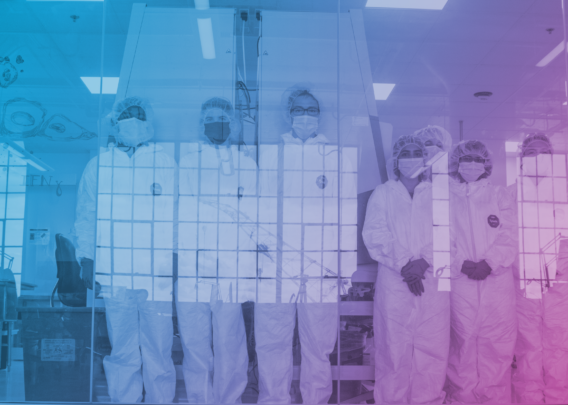June was an exciting month for the world of Organ-on-a-Chip technology, with several groundbreaking studies showcasing how researchers from pharma, academia, government, and more are using Emulate’s technology to unlock new human-relevant insights. Here’s a roundup of the top five publications added to the Emulate website in June:
1. Boosting Immunotherapy for Liver Cancer
Immunotherapy has revolutionized cancer treatment, but it is still not effective for everyone. In this study, researchers from the University of Birmingham looked at how Organ-on-a-Chip technology can make immunotherapy for liver cancer more successful. They created a Liver-Chip by growing primary human liver endothelial cells on Chip-S1 and then flowing peripheral blood mononuclear cells (PBMCs) through the system. They observed PBMCs adhering to the liver cells in response to inflammatory signals, mimicking the natural immune response. This setup is crucial for testing new therapies that could enhance immune cell infiltration in liver tumors. By improving scientific understanding of immune cell interactions within the liver’s complex environment, Organ-Chips can help to develop more effective treatments like CAR T-cell therapy, potentially making immunotherapy work for more patients.
2. Testing Drug Delivery to the Brain
Getting drugs to cross the blood-brain barrier (BBB) is a major challenge in treating brain diseases. In this study, scientists from the Korea Research Institute of Chemical Technology used the Chip-S1 Organ-Chip consumable to model the BBB and test the permeability of various drugs. They evaluated ten different compounds and found that the chip-based system produced results consistent with previous animal and cell studies. The authors were also able to demonstrate a correlation between the drugs’ partition coefficients and their apparent permeability in the chip model. This innovative approach could streamline the drug development process by more accurately predicting which drugs can effectively reach the brain, potentially reducing the need for extensive animal testing and speeding up the path to clinical trials.
3. Creating a Better Kidney Model
Kidney diseases are notoriously difficult to study due to the organ’s complex structure. This publication by researchers from Duke University introduces a new Glomerulus-Chip model that closely mimics human kidney tissue using a super-thin membrane to better recapitulate the thickness of basement membranes. The chip recreates the kidney’s filtering function by forming an epithelial-endothelial interface, a critical component of kidney function. The study showed that this model could replicate the selective molecular filtration seen in healthy and diseased kidneys. This Glomerulus-Chip provides a more accurate and human-relevant alternative to traditional cell cultures and animal models, making it a valuable tool for studying kidney diseases and testing potential treatments.
4. Understanding C. Difficile Infections
Clostridioides difficile infections (CDI) are a persistent problem due to their high relapse rates. In this publication, researchers from Institut Pasteur used various gut models, including Transwell cultures and an Intestine-Chip model, to investigate why these infections are so hard to treat. They discovered that a toxin produced by C. difficile, known as CDT, induces the formation of mucin-associated microcolonies that act like biofilms. These structures protect the bacteria from antibiotics like vancomycin but not from fidaxomicin, a biofilm-disrupting antibiotic. The study’s findings highlight the importance of targeting these biofilm-like structures in CDI treatment, providing valuable insights into how to tackle these stubborn infections more effectively.
5. Exploring Decompression Sickness
Decompression sickness (DCS) is traditionally thought to be caused by nitrogen bubbles forming in the blood due to rapid pressure changes. However, this study out of the University of Colorado Boulder challenges that notion by using an Alveolus Lung-Chip model to explore how pressure changes affect immune responses in the lungs. Researchers found that elevated partial pressures of dissolved gases, like those experienced during decompression, can trigger strong immune reactions in lung cells. They observed that normal alveolar air conditions led to greater immune activation compared to oxygen-reduced air. This new understanding could lead to better prevention and treatment strategies for DCS, moving beyond the focus on nitrogen bubbles alone and considering the immune system’s role in the condition.
To explore Emulate’s full library of publications, check out our Community Publications Digest.




